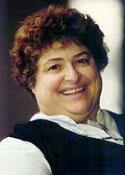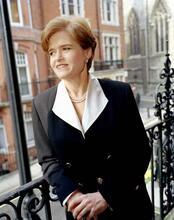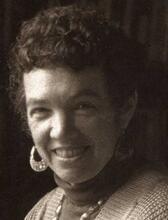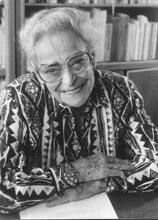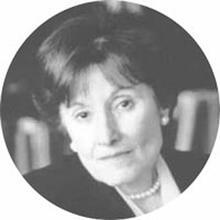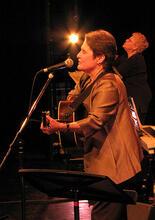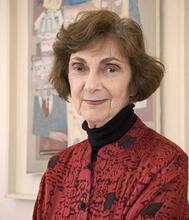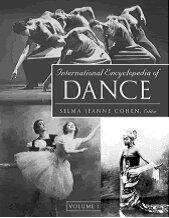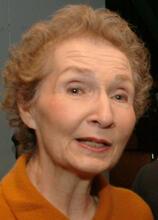Clarisse Doris Hellman
C. Doris Hellman’s study of Johannes Kepler and other Renaissance scientists made her one of the first professional historians of science in the United States. Hellman earned a PhD from Columbia in 1943. Her doctoral thesis, The Comet of 1577: Its Place in the History of Astronomy, was published the following year. In 1959 she published her most esteemed work, her translation of Max Caspar’s biography Johannes Kepler from German to English. Hellman was recognized as an expert on Renaissance-era science and was made a fellow of both the Royal Astronomical Society and the American Association for the Advancement of Science. She was also an active supporter of the Jewish Foundation for Education of Girls.
C. Doris Hellman was one of the first professional historians of science in the United States. She devoted a considerable part of her life to the study of Johannes Kepler and to the history of exact science in the Renaissance. As a scholar and writer, she was adept at working in foreign languages, especially German. Her most lasting contribution is her translation of Max Caspar’s monumental biography, Johannes Kepler (1959).
Early Life and Education
Clarisse Doris Hellman was born on August 28, 1910, in New York City. The daughter of obstetrician Alfred M. and Clarisse (Bloom) Hellman, she was raised in a family that had a special appreciation for the sciences. After graduating from the Horace Mann School, she attended Vassar College, where she studied mathematics and astronomy with such distinction that she was elected to Phi Beta Kappa and graduated with honors in 1930. She then went on to Radcliffe College as a Vassar College Fellow and received one of the country’s earliest advanced degrees in history of science, a master’s degree, in 1931. From Radcliffe, she returned to New York, where she received a prestigious Columbia University Fellowship and went on to complete her Ph.D. at Columbia in 1943.
In the interim, she managed to balance the demands of her graduate study with the responsibilities of marriage and parenthood. In 1933, she married a prominent New York attorney, Morton Pepper, and together they raised two daughters, Alice (b. 1937) and Carol (b. 1940).
In 1951, Doris Hellman accepted a position at the Pratt Institute, where she taught until 1966. She also taught briefly as an adjunct professor of history of science at New York University (1964–1966) before accepting an appointment in 1966 at Queens College of the City University of New York, where she also served on the faculty of the university’s graduate school until 1973.
Academia and Legacy
Doris Hellman’s doctoral thesis at Columbia, The Comet of 1577: Its Place in the History of Astronomy, was published in 1944 (reprinted 1971). She contributed three articles to The Dictionary of Scientific Biography, a major undertaking sponsored by the National Science Foundation (NSF) and the American Council of Learned Societies: on Tycho Brahe, Dörffel, and Georg von Peuerbach (the last of which she coauthored with Noel Swerdlow). She also wrote a broad survey of “Science in the Renaissance” for Renaissance News.
Hellman was a member of the Columbia University Seminar on the Renaissance (1956–1973). Her scholarship was recognized by an NSF Senior Postdoctoral Fellowship in 1959–1960. Additionally, she was a Fellow of the Royal Astronomical Society and of the American Association for the Advancement of Science, which she served as secretary of its section for history and philosophy of science in 1957.
Hellman was prominent among the women who helped support the history of science in its earliest years in the United States. She served as an elected member of the Council of History of Science Society from 1949 to 1959, and again from 1964 to 1966. She was also a member of the Advisory Council of the Renaissance Society of America. While serving as secretary of the U.S. National Committee of the International Union of History and Philosophy of Science (1958–1960), she was a delegate representing the National Academy of Sciences and the National Research Council to the Ninth International Congress of the History of Science that met in Barcelona, Spain, in 1959. Later she also served as secretary of the Tenth Congress, held in Ithaca, New York, and Philadelphia in 1962. Hellman was elected to the International Academy for the History of Science as a corresponding member in 1963 and was elected a membre effectif six years later. In addition to her work as a historian of science, she was active in supporting the Jewish Foundation for Education of Girls (1942–1973).
Clarisse Doris Hellman died in New York City, on March 28, 1973.
Selected Works
“Brahe,” “Dörffel,” and, with Noel Swerdlow, “Peuerbach.” In The Dictionary of Scientific Biography (n.d.).
The Comet of 1577: Its Place in the History of Astronomy (1944. Reprint, 1971).
Caspar, Max. Johannes Kepler. Translated by C. Doris Hellman (1959. Reprint, 1962).
“Science in the Renaissance.” Renaissance News 8 (1955): 186–200.
Obituary. NYTimes, March 29, 1973, 50:4.
Rosen, Edward. Archives internationales d’histoire des sciences 25 (1975): 94–95, and “Éloge.” Isis 66 (1975): 561–562.
WWWIA 6 (1974–1976): 188.

